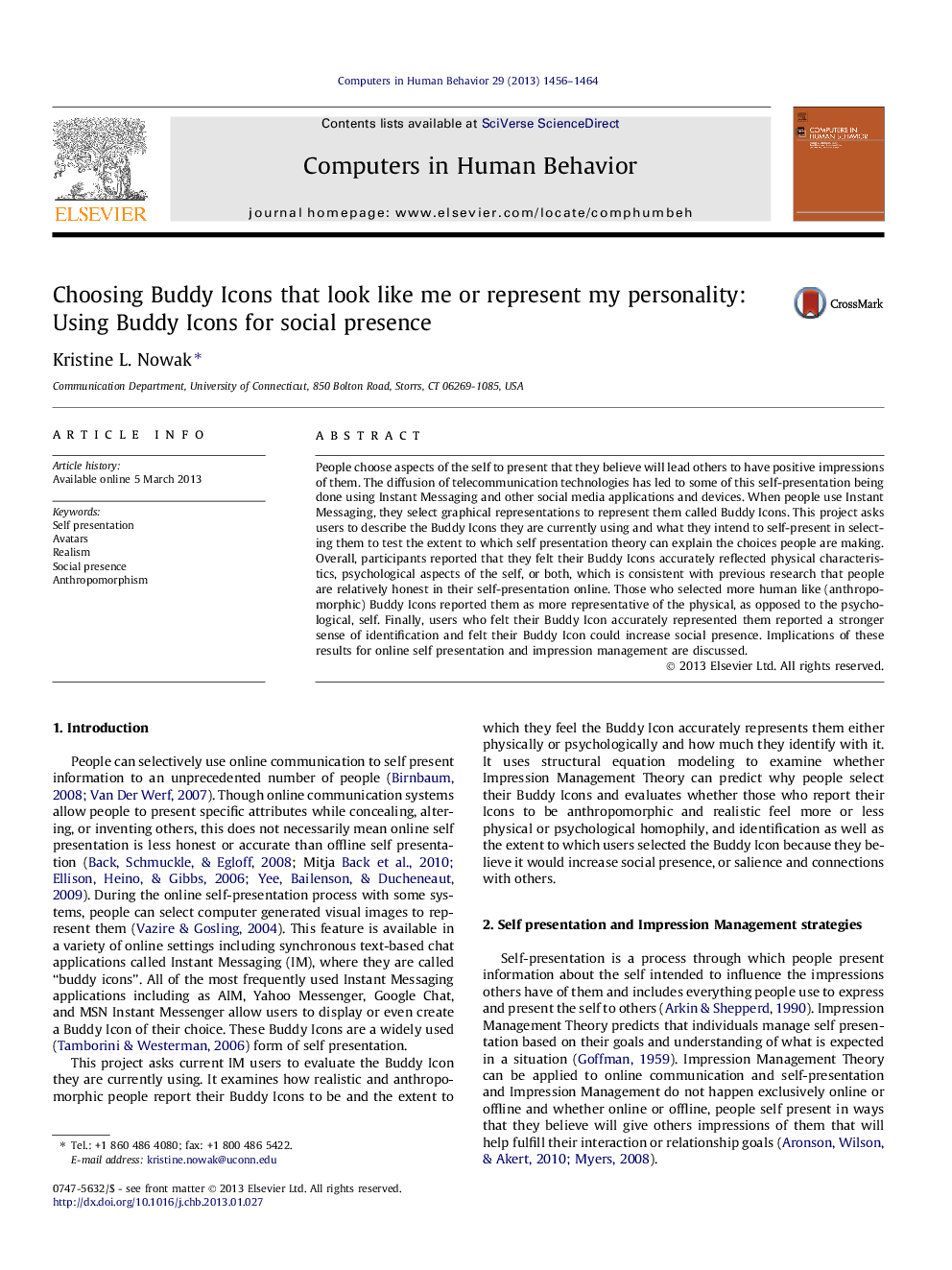| Article ID | Journal | Published Year | Pages | File Type |
|---|---|---|---|---|
| 351045 | Computers in Human Behavior | 2013 | 9 Pages |
People choose aspects of the self to present that they believe will lead others to have positive impressions of them. The diffusion of telecommunication technologies has led to some of this self-presentation being done using Instant Messaging and other social media applications and devices. When people use Instant Messaging, they select graphical representations to represent them called Buddy Icons. This project asks users to describe the Buddy Icons they are currently using and what they intend to self-present in selecting them to test the extent to which self presentation theory can explain the choices people are making. Overall, participants reported that they felt their Buddy Icons accurately reflected physical characteristics, psychological aspects of the self, or both, which is consistent with previous research that people are relatively honest in their self-presentation online. Those who selected more human like (anthropomorphic) Buddy Icons reported them as more representative of the physical, as opposed to the psychological, self. Finally, users who felt their Buddy Icon accurately represented them reported a stronger sense of identification and felt their Buddy Icon could increase social presence. Implications of these results for online self presentation and impression management are discussed.
► Surveys frequent IM users and asks about Buddy Icons users are currently using. ► Asks users to evaluate them and how much they identify with them or the extent to which they enhance social presence. ► Uses SEM to examine the relationship between visual characteristics of the Buddy Icon and social presence and identification. ► Finds users report they selected Buddy Icons that accurately represent them either physically or psychologically.
